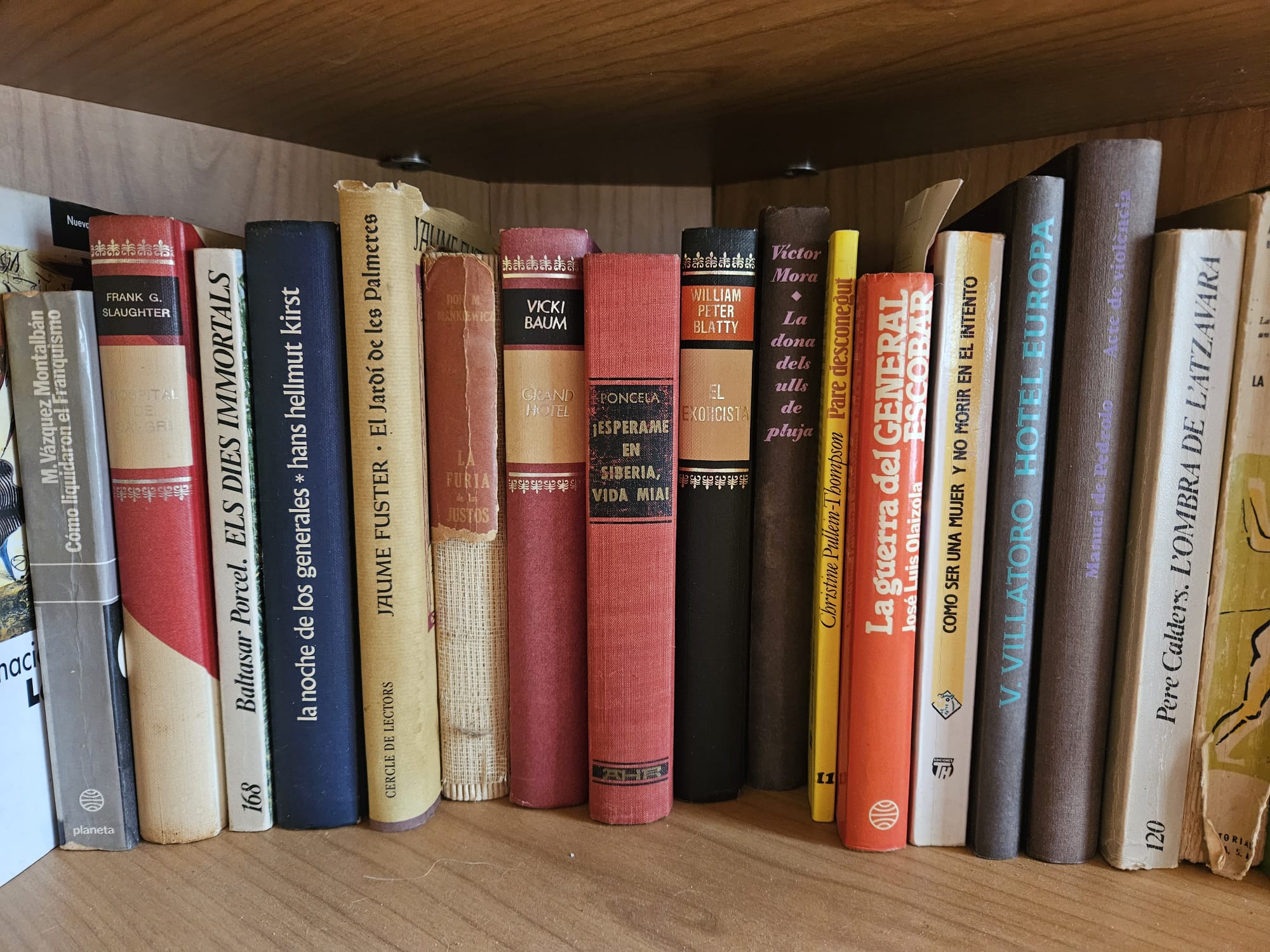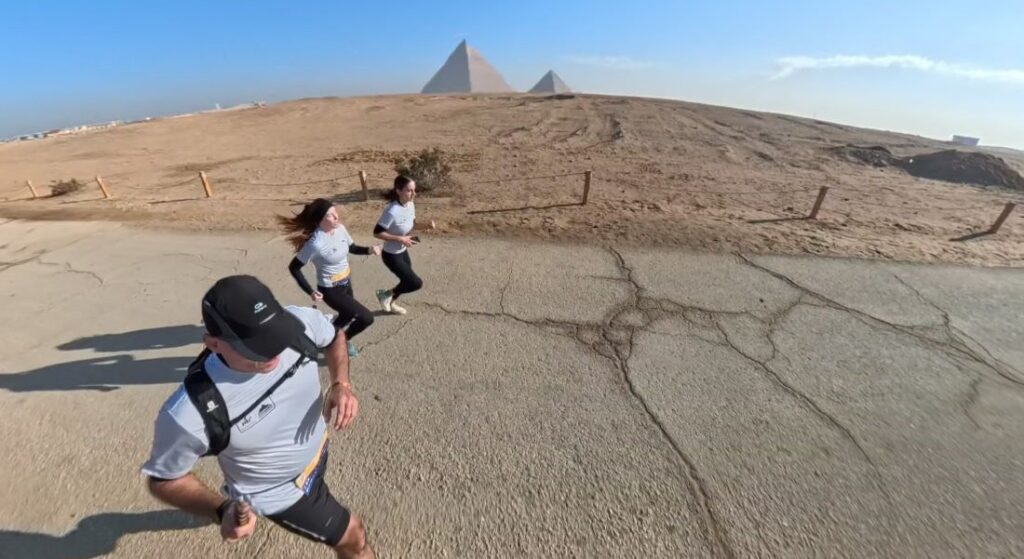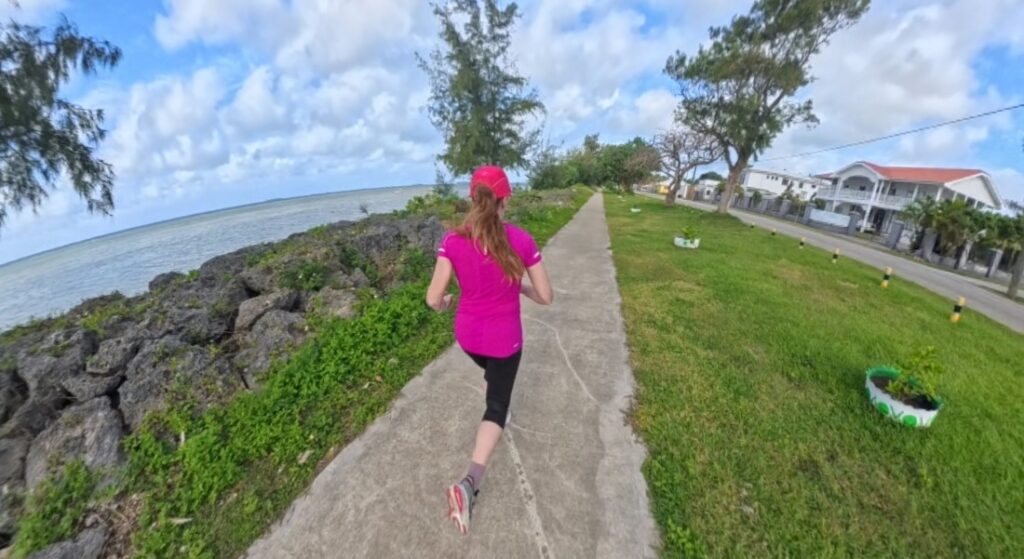Greenland. November 2021.
The Polar Circle Marathon in Greenland is about extremes: extreme weather, extreme running conditions, and extreme beauty. From running on the ice cap to experiencing the magnificient view of glaciers and windy solitaire paths, this race is not for the faint hearted.
TLDR; “too long, didn’t read”
- I just want to run! Take me to RACE.
- I have 1 minute. Take me to USEFUL INFORMATION.
- Running is my excuse for travelling. Take me to TRIP.
- Running is my excuse for eating. Take me to CARBOLOADING.
- I want to know what to read in the plane. Take me to ONE BOOK.
🌍 The trip 📷
If traveling to Greenland is normally challenging (there are only flights from Reykjavik and Copenhagen), we did so in Covid’s aftermath, so the logistics got quite complicated and we even had to do a PCR in Copenhagen’s airport. Luckily, we tested negative and we were cleared to board our flight to Kangerlussuaq the day after.
Copenhaguen 🇩🇰
We spend a day in Copenhagen, doing some sightseeing and attending the “tapas dinner” organized at Albatros Adventure Travel’s headquarters. The dinner was very informative, and we were shown pictures and videos of the amazing landscapes we were going to visit. The organisation served catered food, with loads of carbs, but included veggie options and even chocolate cake 🎂, and there was Craft Sports wear’s merchandising on display. We could socialize with our fellow runners, realizing that we had people from all over the world. Oh, we were all so excited after seeing the videos! 👏 The “goody bags” contained nice tshirts and stainless thermo bottles.
Kangerlussuaq
The Polar Circle Marathon takes place in Kangerlussuaq, and the guys from Albatross Adventure Travel organize a very good “trip and marathon” package in which all the needs of the “adventurer runner” are thought of.

We arrived to Kangerlussuaq airport with a direct flight from Copenhagen and we felt the cold straight away (-10C. It was even exciting for us!). Soon we saw the typical greenland architecture of the place. In there, only 450 people live.
We stayed in the hotel in the airport. The hotel has a good heating system, a comfortable decoration of fur rugs, and drinkable tap water (one of Earth’s cleanest, btw). Its cafeteria is called “Musk ox”, which is an animal to be found here. We were told that, if we happen upon one, we need to “de-escalate”. Whatever that means!
Russell glacier
First activity was to visit the Russell glacier, and this was the most amazing experience. A magic universe of white, blue, ice, snow…. What impressed us the most was that the glacier “is alive”: you can hear it creaking. It took us a while to realize it was the sound of the ice, as firstly we thought it was some of our colleagues falling down.

I did slip and fell, which is very usual, in a tunnel inside the ice. But I had so many layers of clothing on me that I didn’t feel the fall 😂
At night, we went to the “Rowing club” for a buffet dinner – again very well organized. Funny story: one Dutch runner had filled his Albatros’ thermo bottle with liquor… and was “secretly” serving it 😉
The day after we went to “explore the race course”. A very good idea, especially if you are not used to run on ice. We explored the ice cap and realized that running would be more difficult than expected. In some places you need to climb or descend the ice like a toboggan. I was so grateful that we had invested in good gear: you just will suffer if you try to save in equipment! See this post about equipment. And at night, pasta dinner 🍝 in the hotel.
The ice was here, the ice was there,
Samuel Taylor Coleridge, “The rime of the Ancient Mariner”
The ice was all around:
It cracked and growled, and roared and howled,
Like noises in a swound!
On Saturday, we cheered the marathon runners as we were running the day after. We specially cheered on group of “young” 70 year old guys from Spain: a couple of them had run more than 100 marathons! And we saw the fastest runners arrive under 4 hours, including one local runner.
The “Polar Bear Challenge” 🐻
Many opt for the “Polar Bear Challenge”, which is a marathon and a half option. This means that you run the marathon on Saturday and the half on Sunday. We were content to explore Kangerlussuaq, enjoy the magnificent views of Mount Hassel and get to learn more about Greenland. We saw the trees, the only ones in the whole island, planted in the outskirts of Kangerlussuaq in 1976. They are small, as the soil is not fertile enough. There is tundra everywhere, and in fact, most of Greenland is an “arctic desert”.
In the afternoon, we attended a conference about Greenland that proved super interesting. The speaker, Bjorg, has spent more than 49 years in here! He came in 1972 to be a radio operator, and stayed. He talked about the innuit language, spoken from Alaska to Hudson Bay, and explained about Greenland’s 18 cities and 60 settlements. Later he compared the population and extension with that of Europe, and talked about the weather and terrain. After the conference, we finished the day with another 🍝 pasta dinner 🍝 (accompanied by local delicacies!). And as “desert”, we got to see the Northern Lights in the same Kanqer airport. Magical.
🍜 Carboloading 🍝
Since Greenlandic cuisine relies heavily in ingredientes found in the Artic regions which are very rich in carbohydrates, (necessary to provide energy in such a cold climate), there is no problem for carbo loading.
Kalaallit Nunaanni Brød, or Greenlandic Bread, is made with wheat flour, sugar, and sometimes dried fruit or nuts. There are also many dishes both high on carbohydrates and proteins, like Suaasat: a traditional Greenlandic soup made with seal or reindeer meet, potatoes, rice or barley. We tried both grilled seal and reindeer meat which are very lean, with almost no fat. We also tried the Mattak, or whale skin with blubber, a delicacy enjoyed for its rich and unique flavor.
And after the race you can treat yourself to an Inuit Ice Cream, or Aqutak: a traditional dessert made from beries and whipped fat… but, again, that of seals or reindeers!
🏃♀️ The race 🏃♂️
We decided to run the half marathon after seeing the difficulty of the course and considering our level of training. It was the best idea because we even struggled with this distance.
The race is very hard, not only because of the climate conditions, but also on the legs. The first 7 kilometers on the ice cap are especially difficult, and then you have 14 or 35 kilometers still to run on a very slippery trail road with endless hills. But the views are just amazing, and you run on the glacier, with the blue of the ice and the white of the snow as background.
The ice cap (kilometers 0 to 7)
You need to use your spikes, and run focused on the terrain, as it is slippery and dangerous. We even had to slide down in some areas, shouting “out, out!” to make sure nobody was in your way. I also fell in a couple of occasions when I stepped on fragments of ice. But alas! When you look up and see the view, it is magnificent! A magic landscape, desolate but beautiful.
The wind is quite strong as well, and we used our Cold Avenger’s masks to protect ourselves. We also had to re-attach our bibs because of the wind. While you hear the ice cracking and the wind blowing; quite a surreal experience.
The course is very well indicated and people from Albatros are everywhere watching and taking good pictures.
The hilly trail (kilometers 7 to 21 or 42)
It is also very slippery, specially if you are not used to run on trails with patches of ice, as it was our case. And it is hilly: something you “suffer” more after having to stress your legs for 7 kms on the ice cap.
Again, the views are superb, and the organization super efficient. There are drink stations (4×4 trucks) every 5 kilometers where you are handed over a reusable vase with water or an electrolyte drink… warm! We ended up shouting “electrolytes!” as soon as we saw the drink station 🙂

The guys attending the stations were very friendly, and some of there were locals, so I could practice my “innuit” after Bjorg’s conference the day before and say “qujanaq” which means “thank you”. Once of them shouted at us “Vive la France!” as he thought we were… French! 😂…
The half marathon finishes next to a frozen lake, and a big Dane hugs you at the finish line. The organisation provides you with snacks and refreshments, as well as medical assistance. Two doctors flew from Copenhaguen as part of the expedition.

The celebratory dinner
The trip finishes with a celebratory dinner 🎉 with trophies and awards ceremonies, and videos of the other adventure marathons that Albatros organizes.
We had Salmon, prawns, musk ox and reindeer, as well as “greenlandic coffee” which is basically coffee with a lot of alcohol 🙂 and cream on top, to represent the “snow” of Greenland.
It was friendly and a very different way to spend Halloween night and celebrate our achievements together!

Useful information & Equipment
🏆 Polar Circle Marathon (42K) / Half Marathon (21K) and Polar Bear Challenge (both races). Cut-off time: 7h for the full marathon.
⛰️ Difficulty Very high. The first part on the ice cap is slippery and very hard on the legs, and the rest of the race is run in a very hilly terrain with parches of ice.
🌐 Website https://polar-circle-marathon.com/
🗓️ Last week of October in Kangerlussuaq, in Greenland (Artic)
👟 Trail shoes with spikes (mandatory!)
🏅 You will get home with a technical marathon shirt (Albatros Adventure Marathons have special good taste in the design of their shirts), and upon arrival, a nice and robust medal.
✅ Very well organized: every detail is taken care of.
✅ Amazing landscape and the opportunity to visit Greenland and experience running on the ice cap.
❌ It is a very difficult race, specially the first part on the ice cap. You might not be able to finish under the 7h cut-off time.
❌ It is not cheap, and it is run in late October, when the temperatures drop.
👟 Equipment 🎽
We had to pretty much buy all of the equipment, as we live in a very different climate, that of mediterranean Barcelona.
To take into account: 🚨 no cotton in arctic climate!, bring all-round wind protection and remember that the “less is more” does not apply: if you get cold 🧊, it is difficult to get warm.
Based on Albatros adventure marathons’ recommendations, our experience, and a lot (and I mean, a lot 🤯) of searches on the internet, we ended up with the following:
List of equipment
- Body base/inner layer: needs to transport sweat away from your body. We picked Helly Hansen’s dry stripe crew.
- Body mid layer: needs to insulate, provide warmth and breathability. We picked Salomon’s explore seamless half zip.
- Body top/outer layer: weather protective. Needs to be wind-proof. We went for Arc’teryx shoft shell jackets.
- Legs outer layer: needs to be wind-proof. We picked Salomon’s ones.
- Legs inner layer: winter thighs. Salomon’s thighs as well.
- Gloves: inner and outer gloves. Our internal gloves we bought from Gorewear, the external ones were Salomon. We also bought Salomon’s mittens, which I highly recommend!
- Goretex running shoes: In our case, Brock’s Ghost.
- Spikes – we have a more light ones and a heavy ones. The heavy ones are mandatory for races like the Frozen Lake Marathon or the Polar Circle Marathon, as you need to run over ice during long distances. For the Artic Marathon in Lapland, light spikes will suffice.
- Shoe protectors
- Socks: two pairs of winter socks (so you can change them if they get wet). Ours were smartwool.
- Winter hats/caps. A winter hat is always necessary! For me, a ponytail one 👩🦰
- “Cold Avengers“: masks to work/do sport in extremely cold weather that made us look like “star wars” villains.
- Sunglasses
- Neck protectors: Ours were from Buff.
- Backpack: A 5-10 liter goretex backpack. We bought a Salomon 10 liter one.
- Trekking boots: For trekking / before and after the race, it’s important to have good trekking boots. Ours were Meindl’s solden.
Others
For this race, spikes are mandatory, and the race officials have the right to stop you if you are not dressed properly.
We ran on a bad day: windy with the sky clouded; we did not see the sun. The equipment proved worthy of the feat: without it, we would have not been able to finish. Special mention to my Salomon mittens: it was the first time in my life that my hands would not get cold.
The only thing we will buy for future arctic races is more solid spikes, as, had it not snowed, we would have struggled.

Map


One book
📖 “Smilla, a sense of snow”, book by Peter Hoeg and 🎬 Movie by Bille August, 1997

Summary: She thinks more highly of snow and ice than she does of love. She lives in a world of numbers, science and memories–a dark, exotic stranger in a strange land. And now Smilla Jaspersen is convinced she has uncovered a shattering crime…
It happened in the Copenhagen snow. A six-year-old boy, a Greenlander like Smilla, fell to his death from the top of his apartment building. While the boy’s body is still warm, the police pronounce his death an accident. But Smilla knows her young neighbor didn’t fall from the roof on his own. Soon she is following a path of clues as clear to her as footsteps in the snow. For her dead neighbor, and for herself, she must embark on a harrowing journey of lies, revelation and violence that will take her back to the world of ice and snow from which she comes, where an explosive secret waits beneath the ice….
⭐⭐⭐⭐

To know more…
| 📖 “Confines”, Javier Reverte (only in Spanish) 📖 “En mares salvajes”, Javier Reverte (only in Spanish) 📖 “The rime of the Ancient Mariner”, Samuel Taylor Coleridge 🎬 “A Polar year”, Samuel Collardey, 2018. |
“Confines” & “En mares salvajes”, by Javier Reverte
The two books are only published in Spanish, unfortunately. The two follow a formula in which Javier Reverte was an expert: a well written description of his trips, including anecdotes, with a prose that is descriptive but does not dwell on it, mixed with his vast knowledge of history, ancient tales, art and literature. Javier Reverte longed for adventure and travelled to places he had previously read about. And he had read a lot about them, which shows in his books and it becomes contagious.
Javier Reverte travelled to the Artic, to the Svalbard region, to Greenland and to Canada and its legendary “North Passage”, and describes these regions and the stories of exploration like no other.
⭐⭐⭐⭐
“The Rime of the Ancient Mariner”, by Samuel Taylor Coleridge
This is a long poem by the romantic poet Coleridge, a member of the Lake Poets, in 1798-1799, and it is a favourite of mine. I have thought often on how Coleridge describes the sense of despair that the artic or antartic seas can inflict on a ill-fated journey; not only in my trip to Greenland but in other trips to cold, harsh climates.
In the poem, an old sailor interrupts a wedding to explain a tale of his dangerous trip to the end of the world.
⭐⭐⭐⭐




